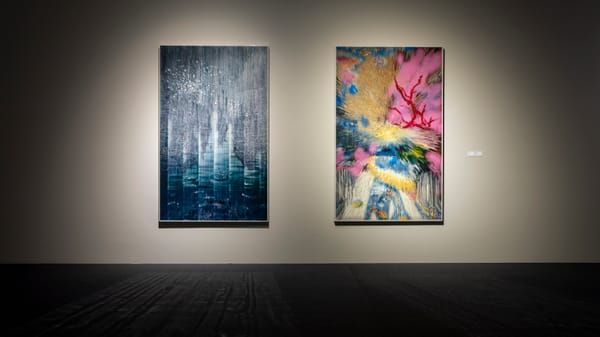Shows
Ammar al-Beik’s “Boya Boya Boya”


“Boya Boya Boya,” a solo show by the Dubai-based Syrian artist and filmmaker Ammar al-Beik, was a profound elegy on the plight of ordinary—yet extraordinary—Syrians, manifested through an exploration of one man, Abou Hani, and his profession, shoe shining. Al-Beik met Hani in Lebanon, where the latter lives and works, two and a half years ago, and Hani’s shoe-shine box, and the objects and stories it holds, were the inspiration behind the works exhibited at Ayyam Gallery’s al-Quoz location in Dubai.
Included alongside the blue shoe-shine box and accompanying stool were scanned images of the box’s contents, photographs of Hani at work and a music video of the song “Boya Boya Boya,” performed by classic Lebanese singer Nassri Shams al-Din. In the video, al-Din sings about one man’s need to provide food, education and toys for his children with his earnings from shoe shining, bringing to mind the countless deprived children in today’s conflict-ridden Syria.
Walking into the 930-square-meter gallery space, visitors to the exhibition were first greeted with a personal message from the artist on the wall. In this text, al-Beik explained his feelings on conceptual art, saying it “doesn’t follow any trends,” and it is “an urgent need to express existence through objects, ideas, images, sounds and space.”
Only one work in the show had a title. Show Shine Box (2013) consists of the actual shoe-shine box, the stool and paraphernalia related to the profession, all purchased by the artist two years previously and presented in a glass vitrine in the first room of the gallery, very much in the fashion of relics at a natural-history museum. It was unexpected that the eight archival prints on cotton paper that hung on the surrounding walls and depicted scanned images of the tools from the box were at such a large scale. In comparison, the box itself was small and humble in stature.
The most political image among these prints depicted the grubby cap of a shoe-polish tin, with “Lion Shoe Polish” printed on it in English. A version of the phrase is also printed in Arabic, except al-Beik has altered the wording to read, roughly, “Lion Shoe Polish since February 22, 1971; al-Assad cleans shoes shoe polish.” The date, which is also written in English, is extremely significant as it was the date on which Hafez al-Assad resigned from the Syrian Air Force, an important turning point in the al-Assad family’s seizure of the Syrian presidency, a post they have held ever since. One cannot help but read this as a political dig at Bashar al-Assad, perhaps referencing how he treats the life of Syrian citizens like dirt, wiping them out like a shoe shiner would polish a smudge off a shoe.

This acerbic political commentary explored in shoe polish was juxtaposed with the unconventional beauty of an untitled scanned print of a shoe-shining cloth. Stained with black and brown circular smudges, the image uncannily suggests a woodblock print on fabric from an ambiguous country rather than the humble cloth that it actually is.
After exiting the first gallery, visitors walked through a hallway in which 14 documentary-like photographs of Abou Hani at work were presented on one wall—each mounted onto a small, white box—while al-Din’s music video played on another. Then, entering into the final gallery, visitors unexpectedly encountered the physical shoe-shine paraphernalia—a broom, sponge and rag, among other tools, each mounted and framed—that had been displayed as scanned prints in the first room at such a large scale that they were mostly unrecognizable as trade tools. Although not in vitrines, the manner in which these objects were presented again exuded a scientific and anthropological quality.
In “Boya Boya Boya,” al-Beik presented a visual surprise for anyone who has been following his recent career. The erudite, Zen-like aesthetics of his new works are a refreshing turn for al-Beik, who as a visual artist is best known for his eccentric, busy and colorful photographs; nonetheless, their apparent examination of social and political nuances is true to his enduring conceptual oeuvre.
Isabella Ellaheh Hughes is the United Arab Emirates desk editor for ArtAsiaPacific.







